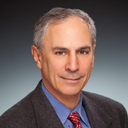I am trying to figure out which is between Gore-tex or Silicone is better for Rhinoplasty. I heard that Gore-tex can shrink 40% in size over time and silicone has a chance of popping out (seen pictures) and make the nose very pointy looking. I'm Asian and seeking a little height as well as smaller base. What do you advise?
Answers (24)
From board-certified doctors and trusted medical professionals
Dr. Jeffrey E. Schreiber, MD, FACS

Dr. Jeffrey E. Schreiber, MD, FACS
Board Certified Plastic Surgeon
Answer
Dr. Thomas A. Mustoe, MD, FACS

Dr. Thomas A. Mustoe, MD, FACS
Board Certified Plastic Surgeon
Answer
Dr. Sirius K. Yoo, MD

Dr. Sirius K. Yoo, MD
Board Certified Facial Plastic Surgeon
Answer
Dr. Rod J. Rohrich, MD

Dr. Rod J. Rohrich, MD
Board Certified Plastic Surgeon
Answer
Dr. Toby Mayer, MD

Dr. Toby Mayer, MD
Board Certified Facial Plastic Surgeon
Answer
Dr. Otto Joseph Placik, MD

Dr. Otto Joseph Placik, MD
Board Certified Plastic Surgeon
Answer
Dr. Ira D. Papel, MD

Dr. Ira D. Papel, MD
Board Certified Facial Plastic Surgeon
Answer
Dr. Tanveer Janjua, MD

Dr. Tanveer Janjua, MD
Board Certified Facial Plastic Surgeon
Answer
Dr. Eric M. Joseph, MD

Dr. Eric M. Joseph, MD
Board Certified Facial Plastic Surgeon
Answer
More Rhinoplasty Questions
See all Rhinoplasty Q&AWE SEND PRETTY
EMAILS
What’s trending? Who’s turning heads? Which TikTok myths need busting? We’ve got you. No fluff, no gatekeeping—just real talk. Get our free, unfiltered newsletter.
